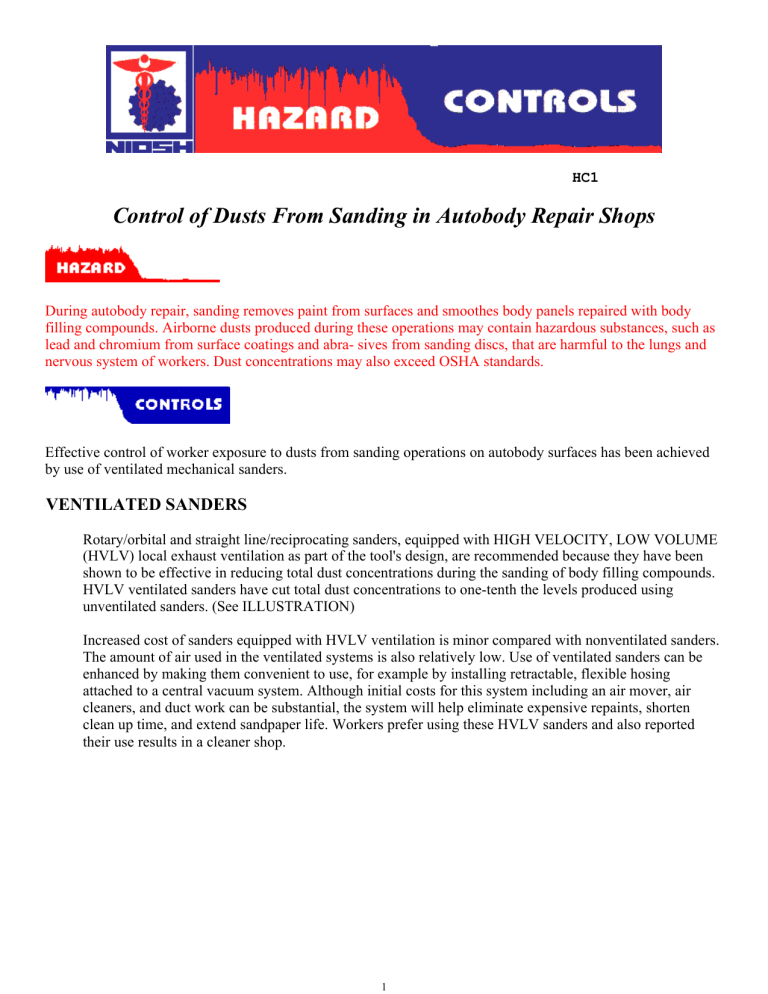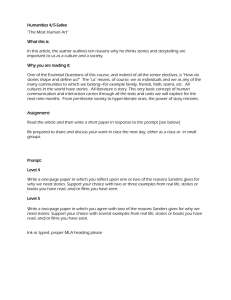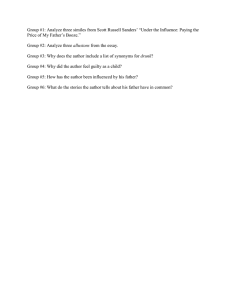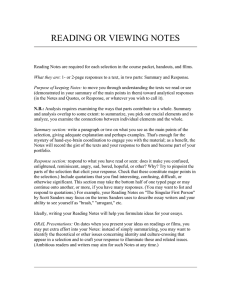
HC1 Control of Dusts From Sanding in Autobody Repair Shops During autobody repair, sanding removes paint from surfaces and smoothes body panels repaired with body filling compounds. Airborne dusts produced during these operations may contain hazardous substances, such as lead and chromium from surface coatings and abra- sives from sanding discs, that are harmful to the lungs and nervous system of workers. Dust concentrations may also exceed OSHA standards. Effective control of worker exposure to dusts from sanding operations on autobody surfaces has been achieved by use of ventilated mechanical sanders. VENTILATED SANDERS Rotary/orbital and straight line/reciprocating sanders, equipped with HIGH VELOCITY, LOW VOLUME (HVLV) local exhaust ventilation as part of the tool's design, are recommended because they have been shown to be effective in reducing total dust concentrations during the sanding of body filling compounds. HVLV ventilated sanders have cut total dust concentrations to one-tenth the levels produced using unventilated sanders. (See ILLUSTRATION) Increased cost of sanders equipped with HVLV ventilation is minor compared with nonventilated sanders. The amount of air used in the ventilated systems is also relatively low. Use of ventilated sanders can be enhanced by making them convenient to use, for example by installing retractable, flexible hosing attached to a central vacuum system. Although initial costs for this system including an air mover, air cleaners, and duct work can be substantial, the system will help eliminate expensive repaints, shorten clean up time, and extend sandpaper life. Workers prefer using these HVLV sanders and also reported their use results in a cleaner shop. 1 For More Information For a free copy of the report Evaluation of Ventilated Sanders in the Autobody Repair Industry, or for information on other occupational safety and health issues, call the National Institute for Occupational Safety and Health. (NIOSH), at: 1-800-35-NIOSH (1-800-356-4674) *NIOSH is the Federal agency responsible for conducting research and making recommendations for preventing work-related illness and injuries. HAZARD CONTROLS are based on research studies that show reduced worker exposure to hazardous agents or activities. Acknowledgments The principal contributors to this HAZARD CONTROLS are William A. Heitbrink, Division of Physical Sciences and Engineering, and Jerome P. Flesch, Education and Information Division, NIOSH. This document is in the public domain and may be freely copied or reprinted. NIOSH encourages all readers of this HAZARD CONTROLS to make it available to all interested employers and workers. DHHS (NIOSH) Publication No. 96-105 2


